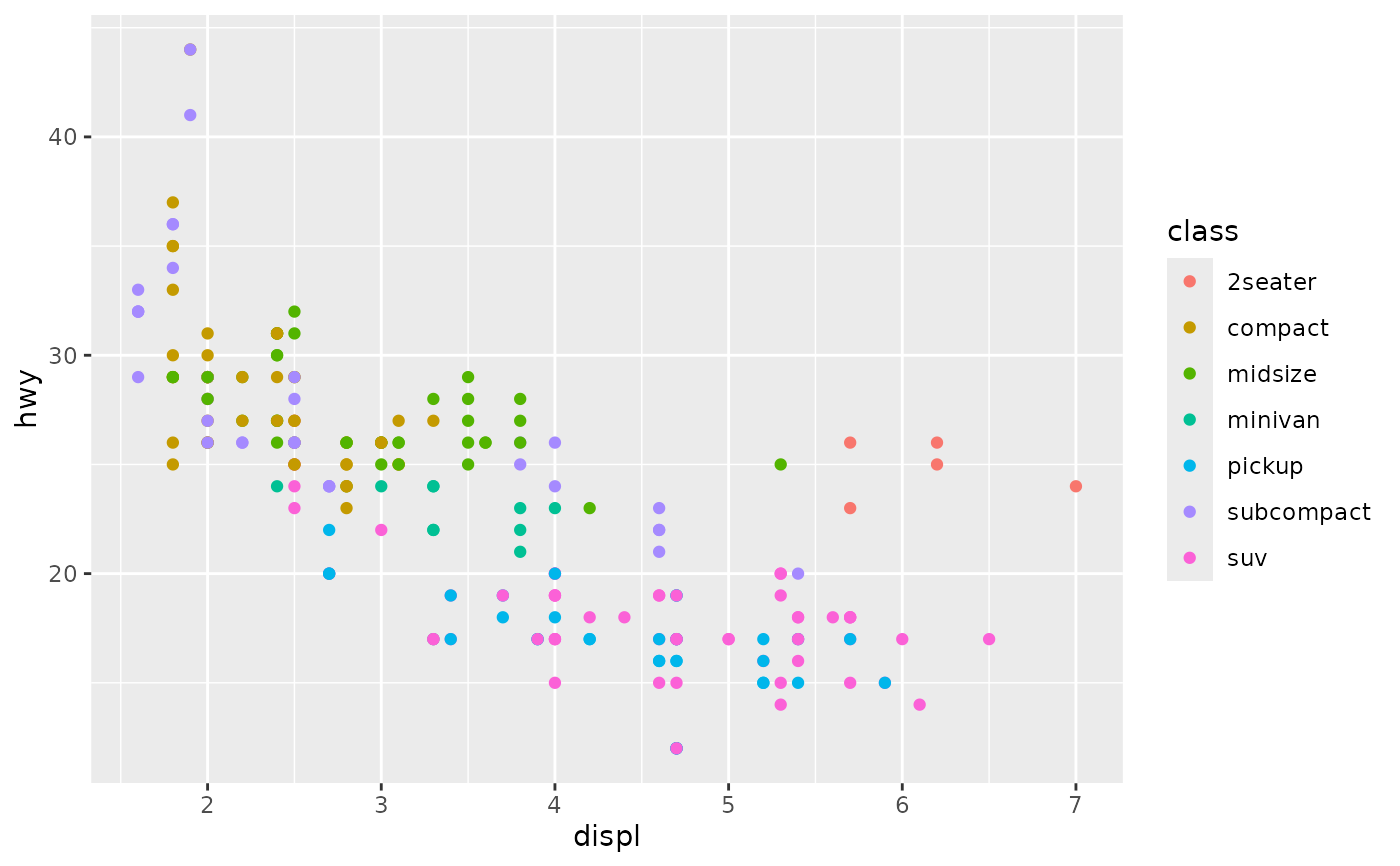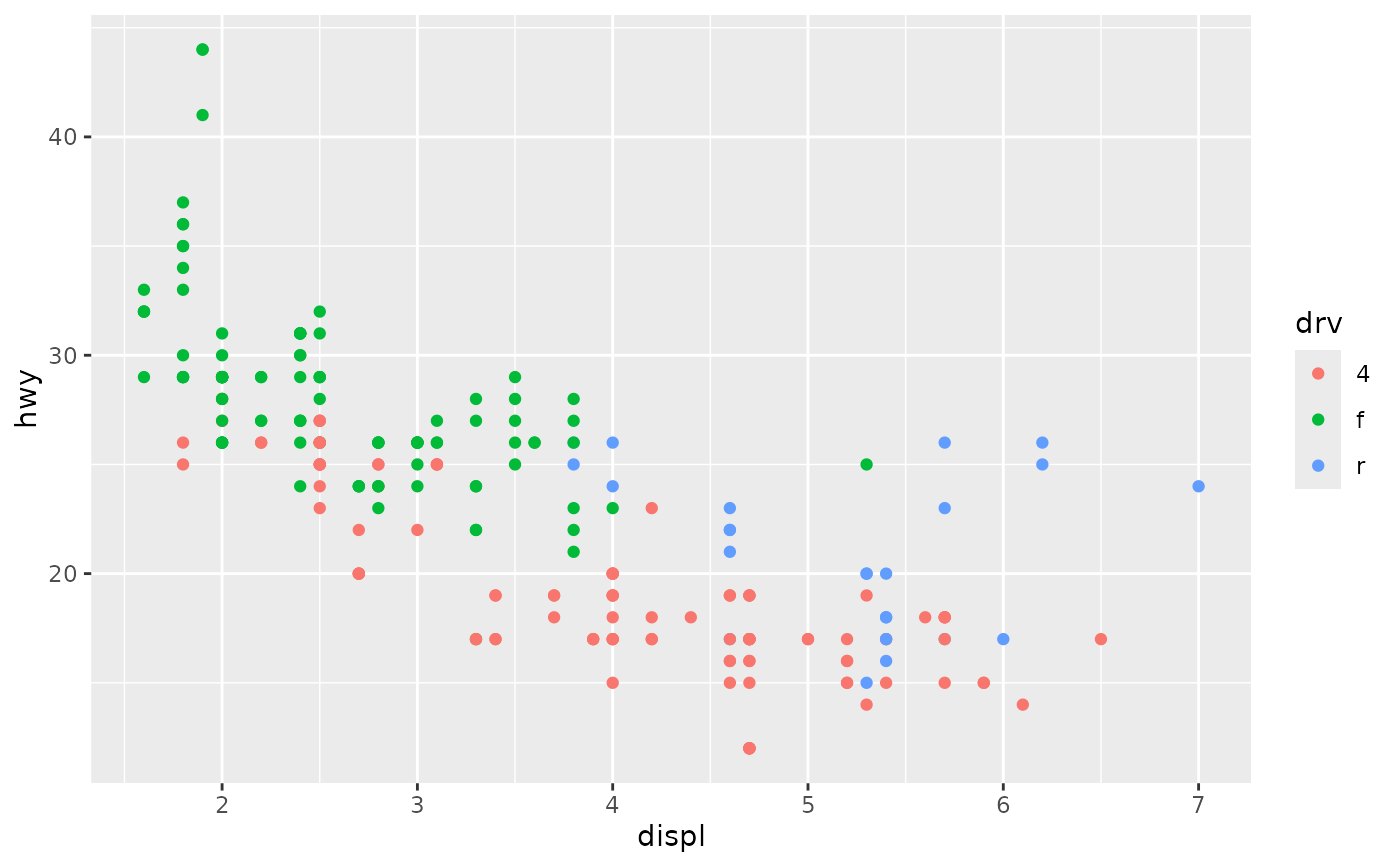Generally, you do not need to print or plot a ggplot2 plot explicitly: the
default top-level print method will do it for you. You will, however, need
to call print() explicitly if you want to draw a plot inside a
function or for loop.
Examples
colours <- c("class", "drv", "fl")
# Doesn't seem to do anything!
for (colour in colours) {
ggplot(mpg, aes(displ, hwy, colour = .data[[colour]])) +
geom_point()
}
for (colour in colours) {
print(ggplot(mpg, aes(displ, hwy, colour = .data[[colour]])) +
geom_point())
}



